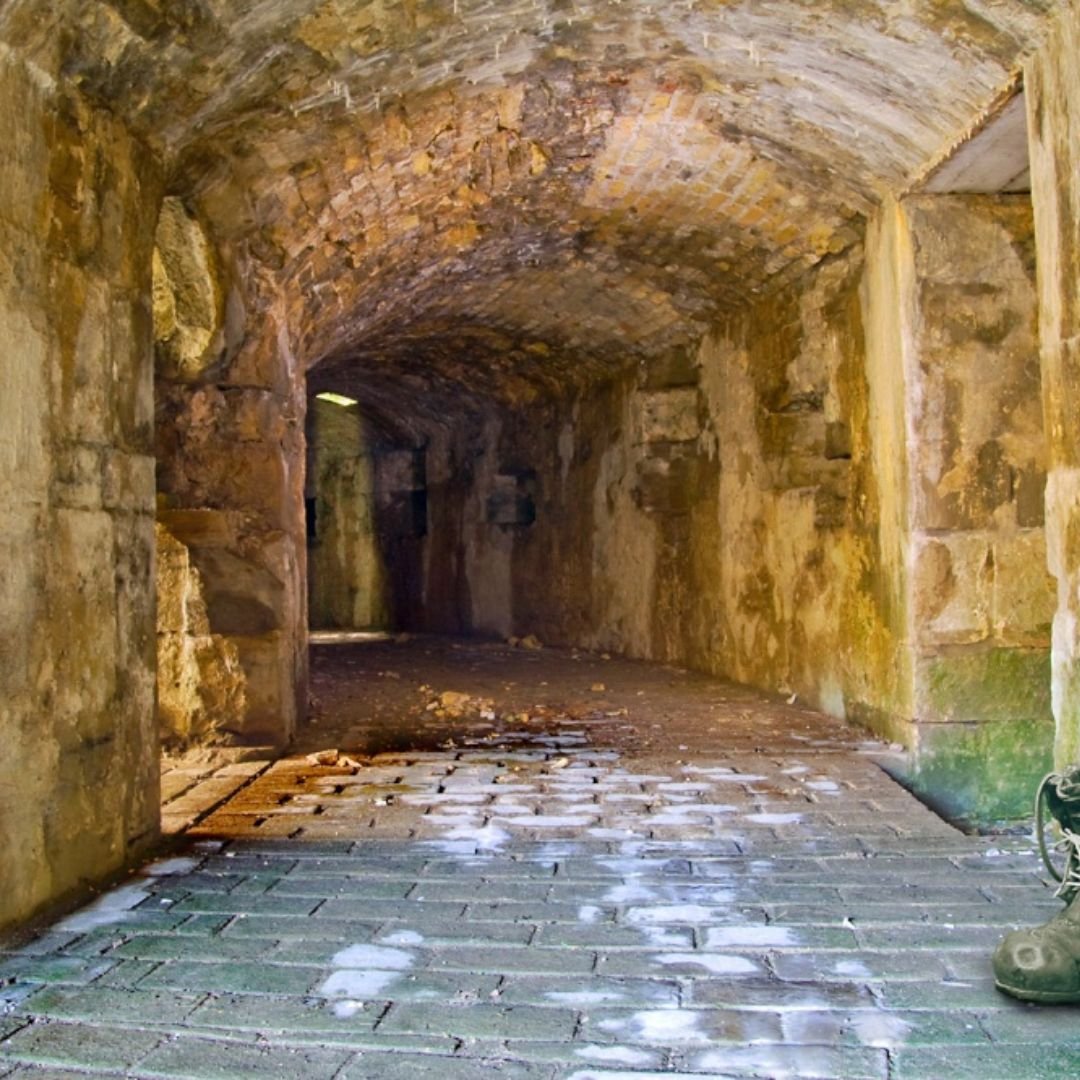Camber Castle: Built By King Henry VIII
Camber Castle, is a 16th-century fort built near Rye by King Henry VIII to protect the Sussex coast of England against French attack.
Using locally sourced stone and bricks, it was completed in 1544 as one of Henry VIII’s fortifications, and soon had garrison strength of 29 men.
A receding shoreline thanks to relentless silting and the eastward shifting of the harbour entrance meant it became obsolete after only a few years.
The castle, restored and now owned by English Heritage and managed by Rye Harbour Nature Reserve and East Sussex County Council, is a very interesting one to visit.
There are towers and tunnels, an octagonal wall, D shaped bastions serving as gun platforms, carved stones and gun embrasures.
Not to mention 16th century fireplaces, bread ovens, the wardrobe (toilet), and interesting plants growing on the walls.
The castle is surrounded by Rye Harbour Nature Reserve so there is plenty to see before and after a castle visit.
History of the castle
Camber Castle was built near by King Henry VIII to protect the Sussex coast of England against French attack.
The first fortification on the site was a small, round artillery tower, constructed by Henry between 1512 and 1514, overlooking the Camber anchorage and the entrance to Rye Harbour.
The castle was garrisoned from 1553 onwards by between 26 and 27 men, including 17 gunners - they were led by a captain, Thomas Wilford.
In 1593, there was a fresh crisis with Spain and the brass guns needed for the English navy were in short supply.
Brass artillery pieces were therefore rounded up from the forts along the south coast, including Camber.
The number of guns at the castle remained around the same, but the larger, brass culverins and Demi-cannons were removed, being replaced with smaller iron demi-culverins.
In 1539, increasing tensions with France encouraged Henry to rethink his coastal defence plans, and Camber Castle was rebuilt and extended over the next year under the direction of engineer, Stefan Hashenperg.
The results were considered unsatisfactory and further work was carried out from 1542 to 1543, at great expense, to rectify the problems.
The result was a large, concentric artillery fort, with a central keep, surrounded by four circular bastions and a circular entrance bastion, built from stone and brick.
The Camber and the surrounding harbours began to silt up, becoming unusable by shipping, and the coastline receded away from the fort, eventually placing it well inland.
Furthermore, the fort had been superseded by newer European military designs even before it had been completed, and peace with France later in the century removed much of the requirement for the fort.
The castle still remained operational up until 1637, when it was closed by King Charles 1.
With the outbreak of civil war in 1642, much of the castle was dismantled by Parliamentary forces to prevent it being used by the Royalists.
The ruins became a popular spot for picnics in the 18th and 19th centuries.
During the Second World War, the castle was used by the British Army, possibly as an early warning site fitted with anti aircraft searchlights.
In an area just to the north of the castle, the Starfish and Naval decoy sites were created to distract incoming German bombers from the town of Rye itself.
Trenches were dug in the north bastion, and military training may have been conducted around the outskirts of the castle.
It is now operated by English Heritage, who reopened it to visitors after an extensive programme of conservation between 1968 and 1994.
An underground vaulted ring passageway, only 1.9 metres high ran around the outside of the keep, with similar covered radial passageways leading off to each of the bastions.
However the passageways are now ruined.
Today, the three-storey castle itself has changed little since its completion in 1544, an incorporates elements from all of the three phases of building work in 1512–14, 1539–40 and 1543–44.
It is now roofless but still standing up to 18 metres tall, and covers 0.73 acres, almost as big as the largest of the Device Forts at Deal in Kent.
The first tower on the site was built from fine-grained yellow sandstone, with the later expansion making use of both yellow and grey sandstone, with imported Caen stone being used for the finer detailing.
The fort is an unusual example of an unmodified Device Fort and is protected under UK law as a Grade 1 listed building.
If you’d like to visit, the address is: Winchelsea TN36 4AZ.
There is not entry fee upon arrival.
If you enjoyed this blog post, please follow Exploring GB on Facebook for daily travel content and inspiration.
Don’t forget to check out our latest blog posts below!
Thank you for visiting Exploring GB.




















